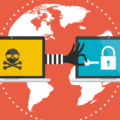The internet has connected us to each other in a way we would have thought impossible a few decades ago. But these massed connections can be very dangerous.
The beauty of the internet is that one PC can connect to another PC with relative ease. And these connections allow us to pool resources, share information and provide services. The foundations of almost every web service are based upon collections of PCs all working together to deliver an end result. These are often automated tasks that allow a website to continue operating correctly. But the fact that these PCs are generally left to their own devices means they aren’t actively monitored. And this situation makes them a security risk.
Known as botnets, these collections of PCs can have their cumulative power put to use for the gains of hackers.
What are Botnet Attacks?
While most botnets combine harmless coding with hardware, malicious botnets are another matter. A malicious botnet can gain access to your PC via two methods:
- A targeted attack such as an infected email or password breach
- The discovery of a vulnerability in your PC by an automated code which crawls the internet in search of such weaknesses
Regardless of the strategy involved, the end result is the same: an infection which adds your PC to the hacker’s botnet. Naturally, the more PCs added to the botnet, the more powerful it is. And, with the infection in place, the hacker will have full control of your PC. This allows them to carry out the following tasks:
- Spread across the rest of your organization’s PCs by executing malware in order to swell the numbers of the botnet
- Loading fake adverts in your internet browser designed to trick you into providing financial details to malicious websites
- Use the cumulative processing power of all the PCs in a botnet to carry out DDoS campaigns in order to take websites down
- Generating spam emails to be automatically sent from your organization’s email server
How Can You Protect Against Botnets?
As you can tell, a botnet attack will do your organization no favors and will cause untold damage to other businesses it targets. Therefore, you need to put these precautions into place:
- Make sure that your internet traffic is monitored in terms of both what is entering and leaving your network. Any unusual levels of internet traffic are often an indicator that a botnet is either attacking you or you have become part of a botnet.
- Install all updates to prevent falling victim to any vulnerabilities. Hackers regularly unleash web crawling bots that automatically scan online PCs for these vulnerabilities. With all updates in place, however, you are minimizing this risk.
- Practice best email security practices such as not opening attachments that look suspicious or from senders you don’t recognize. Remember, all it takes is one infected email to bring your organization to a halt.
- Use internet security software to help protect your PC as comprehensively as possible. Tools such as Kaspersky and McAfee’s security suites can provide warnings against visiting malicious websites and infected email attachments – two sure-fire ways of falling victim to a botnet.
For more ways to secure and optimize your business technology, contact your local IT professionals.









